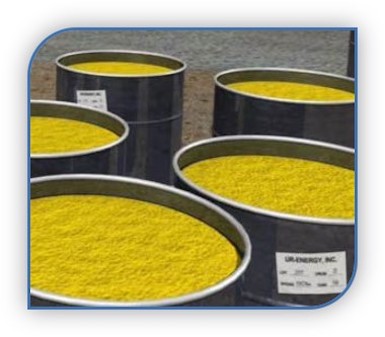In Situ Recovery (ISR)
In situ is a Latin word that literally means “in the place.” Unlike conventional mining methods, in situ recovery (ISR) removes the ore while leaving the rock “in the place.” ISR utilizes a series of EPA Class III wells to inject native groundwater, fortified with oxygen and baking soda into the ore zone. This solution is commonly referred to as lixiviant. The lixiviant dissolves uranium as it is drawn through the ore zone by a pump in a nearby production well. The pump in the production well collects the uranium-laden water and sends it to the processing plant where the uranium is removed by ion exchange. The water is then refortified with oxygen and baking soda and sent back to the ore zone to recover more uranium. The native groundwater continues in this cycle until uranium extraction is complete.
In situ recovery has several significant advantages over conventional mining. First, the environmental impact is minimal, as there is little surface disturbance and the affected water is restored at the conclusion of mining. Second, it is lower cost, allowing Wyoming’s low-grade deposits to compete globally with higher grade deposits and even with operations which are state-supported. Finally, the method is safe and proven, resulting in minimal employee exposure to health risks.


